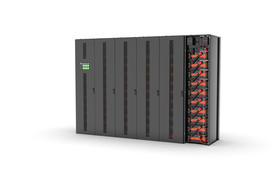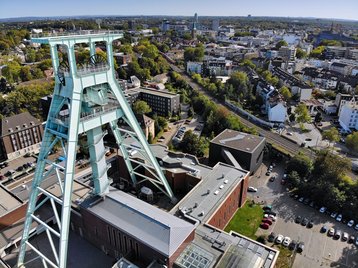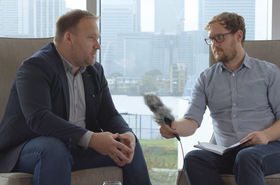Waste heat from a data center in Bochum, Germany, could be stored in an abandoned mine and used in a district heating system.
The new project at Ruhr University, Bochum, aims to demonstrate the potential of Mine Thermal Energy Storage (MTES). It is being funded as part of PUSH-IT, a European Union-backed scheme looking at underground heat storage as a sustainable solution to meet energy demand.
It is thought to be the only MTES currently under development in Europe.
How MTES works
The university has operated its own thermal power plant, which converts hot air into energy, since 2019. It features two combined heat and power modules with a total capacity of 9MW, as well as three gas peak boilers with a total thermal output of 105MW.
In addition to heating the university campus, the power plant provides energy for 4,800 rental apartments, 760 private homes, and 115 industrial buildings in the area. It is run by Unique Wärme, a joint venture between the university and utility company Stadtwerke Bochum, which itself is part-owned by the local authority.
The power units sit directly above the abandoned Mansfeld colliery, which is 120m (393 ft) below ground level. It was created in 1875 but has been abandoned since 1963.
The MTES will see surplus heat generated at the university data and technical center over the summer months sent down into the mine via a heat pump installed at the technical center. Here it will be stored in wells, and it is hoped it can then be retrieved via the pump and used to supplement the thermal heating system in the winter, when demand is highest.
Ruhr University’s data center is said to have a peak load of 700kWh.
To enable the MTES to be developed, four wells will be cut into the first stone drift of the colliery. Based on the results of testing, the wells will either serve as production, injection, or monitoring wells, the project organizers said.
According to a paper published by the International Mine Water Association, the MTES "could increase the amount of renewable energy sources (eg integration of surplus heat from a data center) and help to decrease the peak loads within the district heating grid.”
This would in turn “lead to a reduction in operating costs and CO2 emissions.”
According to PUSH-IT, the MTES is currently in the design phase, with the drilling of boreholes scheduled for the autumn.
Data center heat reuse
More and more data center operators are looking at ways to reuse waste heat to reduce the carbon footprint of their facilities.
In March, Microsoft announced waste heat from a new data center it is building in Høje-Taastrup, Denmark, will be used to warm up to 6,000 homes in the region.
Earlier this week DCD reported on Edinburgh University’s plan to install a heat recovery pump at its Kings Buildings campus to take warmth generated by its data center and put it back into the university heating system.
When it comes to utilizing old mines to capture and store heat, Edinburgh University is also at the center of a £2.6 million ($3.3m) international project that will investigate storing waste heat from the university’s supercomputer in old mine workings, before using it to heat local homes.
Known as the Edinburgh Geobattery feasibility study, it will examine the idea of storing hot water at 40°C in disused mines before using it for domestic heating in the city.
The heat will come from The University of Edinburgh’s Advanced Computing Facility and could warm at least 5,000 households if the feasibility test proves practical.
Elsewhere, Italian company Dauvea is looking to build a 2MW data center in a mine in a former silver mine on the island of Sardinia. This would use water from the mine to cool the data center hardware.
More in The Critical Power Channel
-

-

Sponsored Narada: Power you can rely on
-





